
Shipwreck Alley's Sunken Treasures
A look back in time
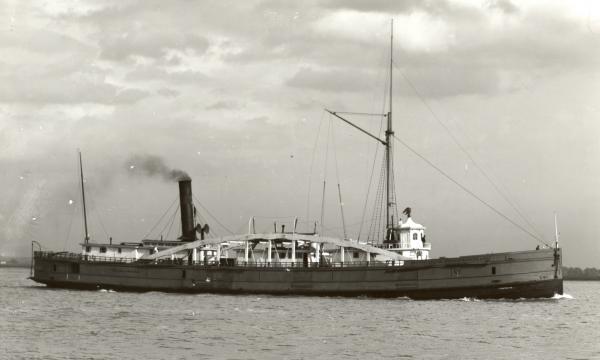
Thunder Bay, an area of northern Lake Huron known for extreme weather and dangerous shoals, has claimed hundreds of ships over the last century. These sunken ships reveal archeological clues about the Great Lakes' commercial shipping past and the water's present health.
Scuba diving archaeologists explore these sunken relics to learn about ship architecture and construction. From wooden schooners to sidewheel steamers to modern freighters, the shipwrecks of Thunder Bay represent a cross-section of Great Lakes maritime history and they are open to anyone that is scuba certified.
The Montana, pictured above, as it was in 1872, now rests at the bottom of Thunder Bay.
Montana shipwreck
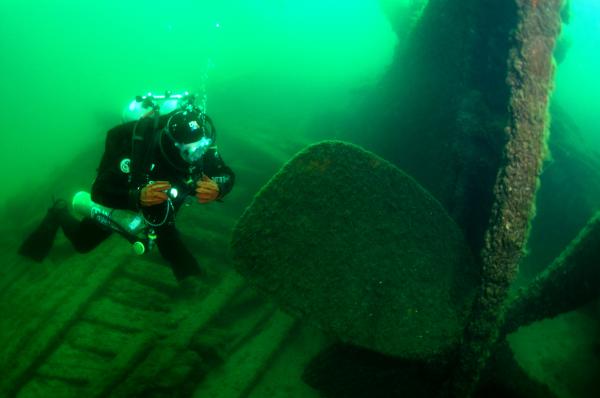
The cold, fresh waters of Lake Huron provide the perfect conditions for shipwreck preservation and the wreckage of the Montana is still in excellent condition, according to Thunder Bay divers, who recently hosted a dive to the ship on a live webcast.
The Montana is a wooden propeller, package freight ship. The ship mysteriously caught fire and burned to the water line on Sept. 6, 1914. Today, the lower half of the ship is all that remains. The ship's bow section is broken off and the hull is now on its side. Divers were able to point out the ship's boiler and propeller. Also visible was a giant steel arch that supported the long wooden hull. The remains of the ship sit mostly about 70 to 75 feet (21 to 23 meters) under the water's surface.
Defiance
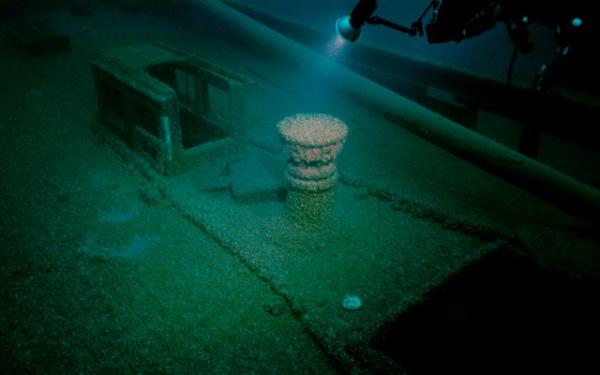
Due to the challenges posed by conducting archaeology underwater, some uncertainties remain in the location or identification of specific shipwrecks. The schooner Defiance, pictured above, is one example of a shipwreck with unknown coordinates.
The aft deck of the Defiance appears in the image. The vessel's crew would have entered and exited the below decks cabin via this companionway.
Sign up for the Live Science daily newsletter now
Get the world’s most fascinating discoveries delivered straight to your inbox.
The ship was lost on Oct. 20, 1854 in Thunder Bay, according to the Thunder Bay Marine Sanctuary records. The Defiance collided with the schooner John J. Audubon on a dark, foggy night.
John J. Audubon
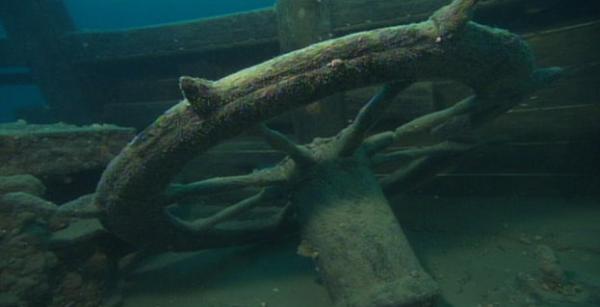
Thunder Bay is home to roughly 100 shipwrecks, but these wreckages are only a fraction of the vessels believed to have been lost in the vicinity of Thunder Bay over the years.
The John J. Audubon, a wooden two-mast brig was nearly cut in half when it collided with the Defiance on Oct. 20, 1854. The Audubon was bound for Chicago from Buffalo when it sank.
The well-preserved wheel of the Audubon is pictured above.
FT Barney
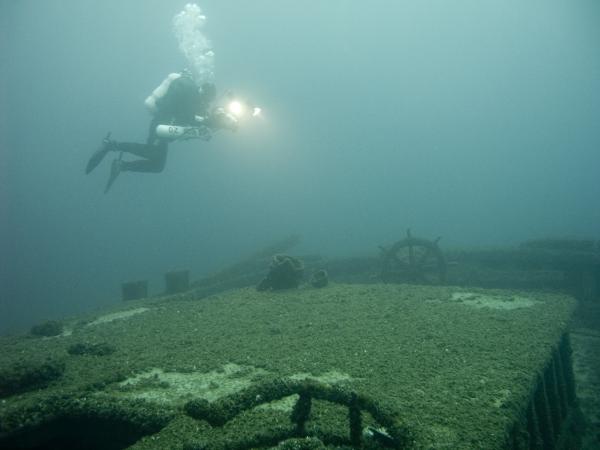
The Thunder Bay National Marine Sanctuary encompasses 448 square miles (1,160 square kilometers) of northwest Lake Huron, off the northeast coast of Michigan's Lower Peninsula. It is the 13th national marine sanctuary in a system that extends from American Samoa to Massachusetts.
The sanctuary is also used to gauge the Great Lakes' health. Diving archaeologists have noticed how one well-known invasive species zebra mussels have spread across the region.
"The mussels cover just about every surface of the shipwrecks in Thunder Bay," said maritime archeologist Russ Green of NOAA during a recent live webcast.
"It's very dramatic, it complicates archeology, but the real story is what [the invaders have] done to the fish stocks in the Great Lakes," Green said. "They filter out food that the smallest fish in the Great Lakes need to survive."
Built in 1856, The F.T. Barney, pictured above, departed Cleveland on Oct. 19, 1868 when it was struck by the schooner Tracy J. Bronson.
E.B. Allen
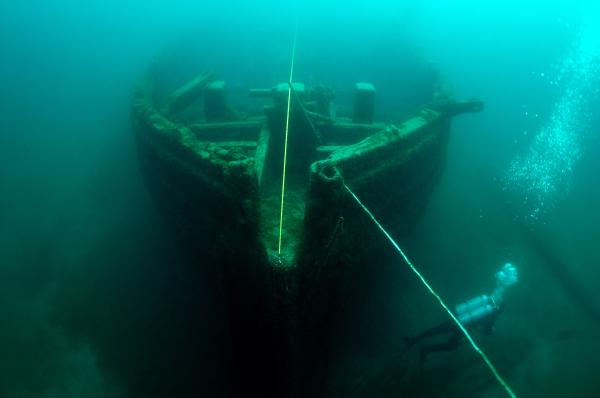
The wooden schooner E.B. Allen collided with the bark Newsboy in a thick fog about 2 miles (3.2 kilometers) southeast of Thunder Bay Island.
The shipwreck of the schooner is sitting on its keel, with a gash from the collision visible on the port side. The Hull, railing and flooring are intact and the windlass, anchor chains and rudder are still in place. The mast, however, is broken off.
A diver swims under the bow of the E.B. Allen in the above image.
Cornelia B. Windiate
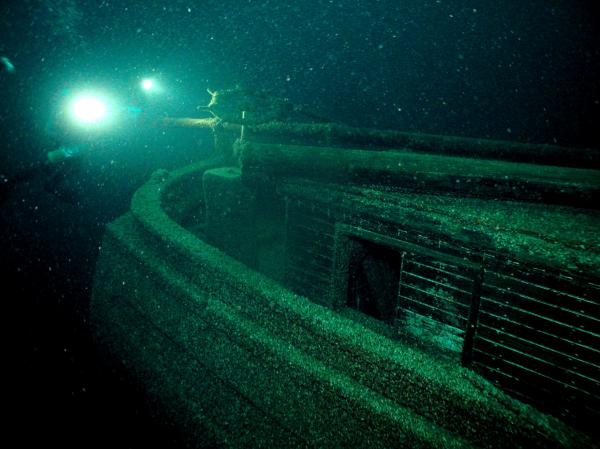
The Windiate is a wooden schooner that went missing on Dec. 10, 1875 and was discovered in 1987 in excellent condition. The ship was bound for Buffalo from Milwaukee when it became trapped in ice and eventually sank. The ship rests almost 200 feet (61 meters) underwater.
In the above image, a NOAA archaeologist documents the starboard gunwale and chain plate from the Windiate.
SS Florida
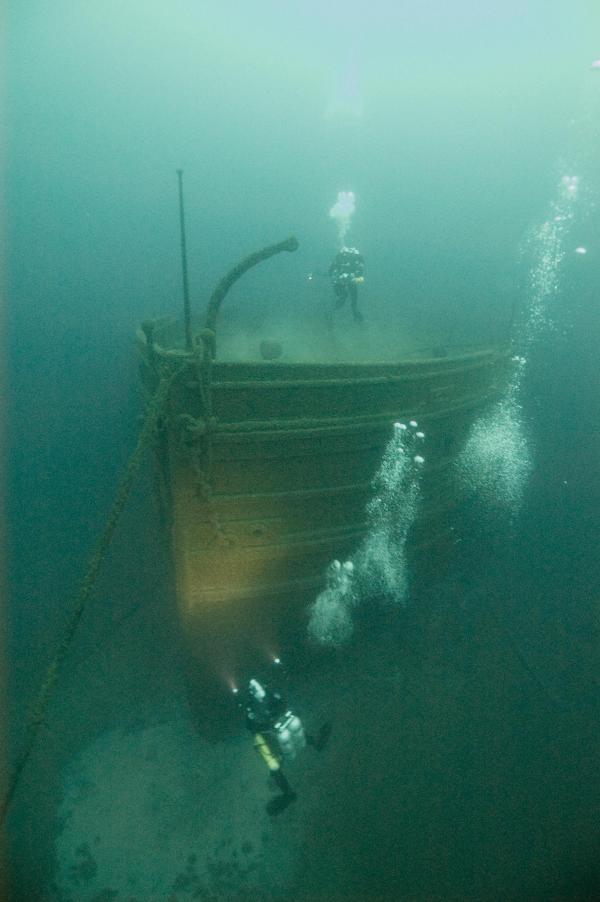
With a simple tape measure and a special waterproof tablet for taking notes underwater, scientists wearing 200 pounds (90 kilograms) of scuba gear documented the shipwrecks. They also snap photos so they can piece together a photomosaic of the remains.
In the above picture, a NOAA diver investigates the bow of the wooden freighter SS Florida, which smashed into the RMS Republic and sank on Jan. 23, 1909.










